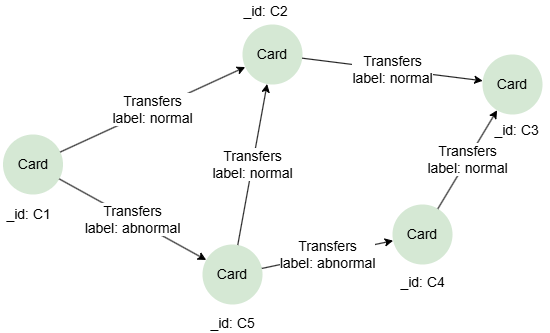Overview
The FOR statement allows you to unnest a list into individual rows by expanding the current working table.
<for statement> ::= "FOR" <for item> [ <for ordinality or offset> ]
<for item> ::=
<binding variable> "IN" <list value expression>
<for ordinality or offset> ::=
"WITH" { "ORDINALITY" | "OFFSET" } <binding variable>
Details
- The name of the binding variable in
<for ordinality or offset>must differ from the binding variable in<for item>. - The
<for ordinality or offset>defines a variable to track the position of elements in the list:ORDINALITYprovides the ordinal position of each element, starting from 1.OFFSETprovides the zero-based position of each element, where the offset position of an element at ordinal positionpisp−1.
Unnesting a List
FOR item IN [1,2,3]
RETURN item
Result:
| item |
|---|
| 1 |
| 2 |
| 3 |
Unnesting a Binding Table
LET user = "Alex"
LET interests = ["tennis", "violin"]
FOR interest IN interests
RETURN user, interest
Result:
| user | interest |
|---|---|
| Alex | tennis |
| Alex | violin |
Unnesting a Group Variable

This query retrieves one shortest path between C1 and C3, and returns the values of the property label on edges in the path:
MATCH SHORTEST 1 ({_id: "C1"})-[trans:Transfers]-{1,6}({_id: "C3"})
FOR tran IN trans
RETURN tran.label
Result:
| tran.label |
|---|
| normal |
| normal |
In this query, the variable trans, declared in a quantified path, holds a group degree of reference when used outside the path pattern. To convert it to a singleton degree of reference, you can use the FOR statement to unnest it.
WITH ORDINALITY
This query collects elements in even positions from a list to a new list:
FOR item in ["a", "b", "c", "d"] WITH ORDINALITY index // index starts from 1
FILTER index %2 = 0
RETURN collect_list(item)
Result:
| collect_list(item) |
|---|
| ["b","d"] |
WITH OFFSET
This query returns the second element in a list:
FOR item in ["a", "b", "c", "d"] WITH OFFSET index // index starts from 0
FILTER index = 1
RETURN item
Result:
| item |
|---|
| b |

